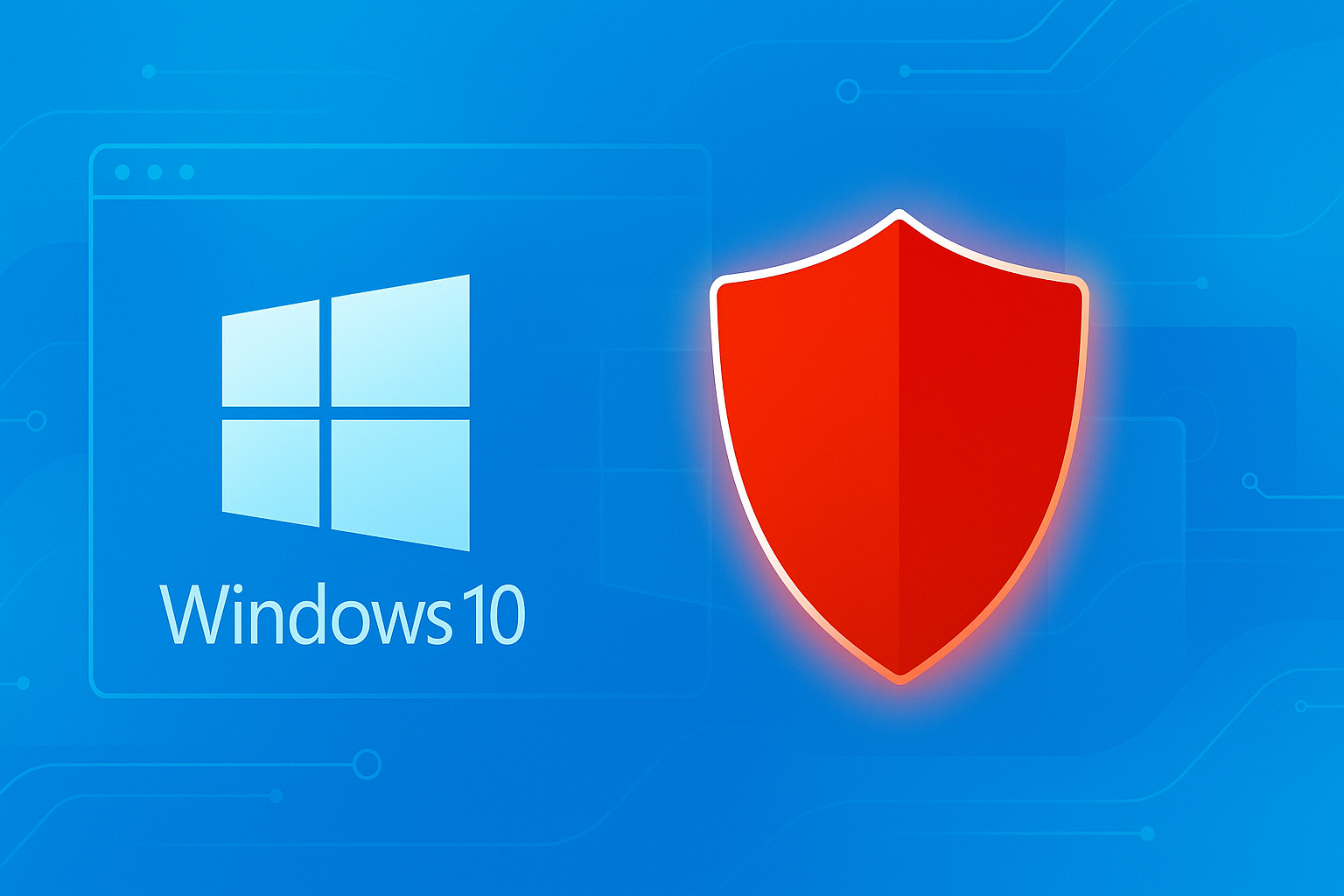How to Spot Cell Phone Spy Software (and What to Do)

Most spyware doesn’t announce itself. It hides in plain sight, which is why app security is so important for anyone with a mobile device. Spyware apps quietly track your messages, calls, location, and even your microphone, without your knowledge.
This guide breaks down how modern cell phone spy software works, the signs to look for, and what to do if your phone is compromised, with tactics that apply to both iPhone and Android.
- How spyware gets installed and what it can access
- The warning signs and how to verify suspicions
- Step-by-step removal, safety planning, and long-term protection
PS: Bitdefender Mobile Security (iOS and Android) includes the tools most users don’t even realize they need, like real-time detection of hidden apps, in-app phishing filters, and traffic scanning that works across browsers and apps. It quietly works in the background, so your phone doesn’t betray you.
What is mobile spyware, and how does it hide in plain sight?
Mobile spyware (sometimes called stalkerware when used in abusive relationships) is surveillance software that can secretly monitor both your offline and online activity. Once installed, it can track your GPS location, read your texts and emails, listen to phone calls, activate your microphone or camera, and harvest data from apps like WhatsApp, Messenger, or Instagram without you knowing.
Researchers identified that some apps are disguised as legitimate apps, like calculators or system tools. Others hide in background processes through malicious code, making them hard to spot unless you know what to look for.
Here are a few early warning signs your phone might be compromised:
- Sudden battery drain, overheating, or sluggish performance
- Unusual background noise during calls
- Apps requesting permissions they don’t need (e.g., a flashlight asking for camera and mic access)
- Data usage spikes or texts you didn’t send
Spyware can slip in when someone has physical access to your phone, but it can also arrive via malicious links, cloned apps (like fake messaging apps or fitness apps), or dodgy sideloaded APK files.
Risks of spyware on mobile phones
Spyware on Android phones can arrive disguised as harmless tools, like a battery saver, a parental control app, or even a fake WhatsApp clone downloaded from third-party sites. Once installed, these spyware apps can access nearly everything, including:
- Your text messages
- GPS location
- Call history
- Browser activity
- Saved passwords
- The device’s microphone
And most worryingly, the person monitoring you doesn’t need to be a hacker. Just a few seconds of physical access (say, borrowing your phone under a pretext) can be enough to install spyware that hides from view.
Here’s how the installation process typically happens:
- You sideload an APK file from outside the Play Store, and give it permission to “monitor battery usage” – a common spyware tactic.
- A fake login page to your social media account captures your credentials, then sends them to a remote server.
- You notice high data usage, strange pop-ups, or your phone heating up for no reason, which are all red flags many non-expert users ignore.
Cell phone spy software is very much real, and is used to collect sensitive personal information, record phone calls, to perform identity theft, or even in domestic abuse situations. Such apps can provide real-time updates on a person’s location and conversations.
If you or anyone you know suspects that spyware apps have been installed on your phone, take these first steps:
- Go to your Settings app > Apps > Permissions and review what apps have access to your camera, mic, or messages
- Check if any apps were installed recently that you don’t recognize. Look for invasive apps, like those requiring admin access
- Avoid connecting to unfamiliar Wi-Fi networks, which can be used for spyware injection
How spyware is installed
Spyware is planted. In most cases, this happens when someone with physical access to the victim’s device installs a stalkerware app disguised as a legitimate tool (like a cleaner or battery optimizer). But installation doesn’t always require being in the same room.
Researchers found several methods used by abusers and bad actors to deploy spyware:
- Remote install via phishing links. This implies clicking a malicious link sent over text, email, or social media, which can trigger app downloads from third-party sites, especially on Android phones where “install from unknown sources” is enabled.
- Fake parental control apps. Yes, some apps that claim to offer parental monitoring actually collect sensitive information like location, call history, or login credentials without proper consent.
- App side-loading. On Android devices, apps downloaded outside the Play Store are often less regulated and easier to disguise.
Android’s open ecosystem gives more freedom to developers, but also more opportunities for invasive apps to exploit security gaps. Unlike iPhones, which require stricter App Store compliance, Android phones can be modified at the OS level. That makes it easier for an abusive person to hide surveillance tools inside a friend’s phone, for example, or modify a new device before gifting it.
Our tip at Bitdefender Security for iOS or Android is: always review the “Apps require” section in your Settings app. If you see something accessing the device’s microphone, GPS, or messages without a clear reason, investigate further or install anti-malware software.
Identify spyware on your device in 5 steps
Spyware is designed to stay hidden. But your phone leaves clues. From battery drain to strange texts, symptoms can point to something more invasive than a buggy app and legitimate uses of day-to-day phone activities.
Here’s a 5-step process to uncover potential spyware on your device:
- Check for most apps in Settings. Go to your phone’s Settings > Apps. Look for unfamiliar names like “Wi-Fi Booster,” “System Cleaner,” or apps that don’t appear on your home screen. Many stalkerware apps use generic icons and labels to avoid detection.
- Review the telltale sign: app permissions. In Settings > Privacy or App Permissions, scan for apps with high-risk access. Look for third-party apps using the microphone, camera, location, or SMS. If a calculator app requests access to your messages, that’s a red flag.
- Track battery and data usage. Spyware runs in the background, which causes overheating or faster battery drain. Go to Settings > Battery and Settings > Data Usage to check if any apps are quietly burning resources.
- Watch for unusual behavior. Frequent pop-ups, screen flickers, or unexplained shutdowns can indicate background activity. Some malicious software can disable system updates to avoid being detected by newer security patches.
- Inspect SMS and notification access. Some apps intercept verification codes or mimic system alerts. If you’re receiving unexpected texts or app notifications that look different, dig deeper.
If you suspect spyware but can’t find anything manually, install a trusted mobile security app with stalkerware detection.
Bitdefender Mobile Security scans for hidden or renamed apps, checks privacy settings, and flags suspicious behavior in real time.
👉 Get Protected Today. Try Bitdefender Mobile Security for your iOS or Android.
How to remove spyware from your device
Here’s how to safely remove spyware from your mobile device:
1. Turn on Airplane Mode immediately
This severs all live connections: Wi-Fi, mobile data, Bluetooth, GPS, so that spyware apps can't transmit data in real time. Cutting off internet access helps you stop further data leaks and prevent the attacker from remotely wiping evidence.
Disable Bluetooth manually, as some spyware can maintain connections even in Airplane Mode.
2. Boot into Safe Mode (Android)
Safe Mode disables all third-party apps, including most spyware.
- Android: Long-press the Power button > then tap and hold “Power Off” > tap Reboot to Safe Mode
- iPhone: No native Safe Mode, but you can disable background app refresh: Settings > General > Background App Refresh
This gives you a clean state to inspect your phone. Then, look for unknown apps, disguised names (e.g., “System Update,” “WiFi Boost”), or anything installed from outside the Play Store.
3. Revoke device admin access
Spyware sometimes grants itself Device Admin privileges, which prevents you from uninstalling it.
- Android: Settings > Security > Device admin apps. Make sure to disable any suspicious admin access.
- iPhone: Check Settings > VPN & Device Management for unknown profiles or MDM (Mobile Device Management) controls.
If the “Uninstall” button is greyed out, this is usually why.
4. Scan with professional-grade anti-malware
Use a security solution with real-time app scanning and in-app web view protection.
Run a full device scan with a trusted tool like Bitdefender Mobile Security, which detects even disguised or partially installed spyware. Avoid free apps with poor detection rates or those requesting excessive permissions.
Bitdefender flags suspicious app behavior even inside social apps or third-party browsers, which is where most spyware hides.
5. Perform a full factory reset
This is the most effective method, but only when done correctly.
So, before resetting:
- Backup only media files (photos, videos) to a cloud account.
- Do not restore settings, apps, or system data that could reintroduce spyware.
Then, reset your phone:
- Android: Settings > System > Reset options > Erase all data (factory reset)
- iPhone: Settings > General > Transfer or Reset iPhone > Erase All Content and Settings
- After reset: Set up as a new device, not from backup.
6. Secure your cloud accounts
Spyware may have harvested your login credentials, tokens, or backup data. Act fast. Revoke access from unknown devices:
- Google: myaccount.google.com/device-activity
- Apple: appleid.apple.com > Devices
Change all passwords using a trusted password manager. Then, enable two-factor authentication (2FA) on all major accounts (Apple ID, Google, Facebook, WhatsApp, banking apps, etc). Don’t use SMS-based 2FA if the attacker may have SIM access to your SMS messages.
7. Follow up from a safe device
If you suspect the spyware came from someone you know (e.g., in cases of domestic abuse or digital stalking), take these next steps from a different phone:
- Document everything: photos, app names, odd behaviors. Since most stalkerware can detect screenshots or access local files, it’s safer to take photos using a separate phone or camera.
- Consider contacting a local cybercrime or domestic violence support unit.
- Tools like Bitdefender Scamio (a free AI chatbot) can help analyze suspicious links or messages from a safe device.
Plan ahead. Don't fall for spyware apps ever again
Once spyware is discovered, removing it is only half the solution. Preventing re-infection is highly important. Many stalkerware apps are reinstalled because the victim never fully regains control of their digital ecosystem.
Here’s how to build long-term resilience against mobile spyware.
Secure your digital foundations
Prevention starts with tightening your digital hygiene across devices, accounts, and apps.
- Update your OS to the latest version. Many spyware tools rely on unpatched vulnerabilities, especially on Android. According to most of our Threat Debriefs at Bitdefender, threat actors like to exploit delayed patch cycles to reintroduce mobile malware in the wild.
- Download only from verified sources. Avoid sideloading APKs or installing apps via unknown links, even if they appear to come from friends or family.
- Use a password manager. Plus, avoid reused credentials and use two-factor authentication (2FA) on all major accounts.
- Perform monthly privacy audits. Check app permissions, disable background location sharing, and review connected device lists on cloud accounts like Google, Apple, or Meta.
- Use Bitdefender Identity Theft Protection to actively scan for leaked credentials on the dark web and get alerts if your data shows up in breach dumps.
Protect your phone's operating system
Mobile operating systems are targets due to app permissions, fragmented updates, and broader system access.
- Use Bitdefender Mobile Security for Android and iOS to scan for hidden spyware and block suspicious traffic in real time.
- Enable Google Play Protect, but don’t rely on it alone. Independent AV-Comparatives testing shows Bitdefender’s detection rates consistently outperform Play Protect, especially against advanced threats.
- Avoid rooting or jailbreaking your phone. Doing so disables many built-in security checks and gives spyware root-level access.
Set up a safe new device (if needed)
If you're escaping a high-risk situation or suspect repeat infection, try switching to a clean device.
- Set up the new phone from scratch. Don’t restore from a previous backup unless it has been reviewed by a professional.
- Keep the device physically secured. Avoid leaving it unattended or unlocked.
Remember that Spyware like PhoneSpector and uMobix can re-enter a device via cloud account syncs. Always secure online accounts first before wiping or replacing hardware.
Take social media precautions
Many phishing and malware infections start on social platforms, especially via impersonated accounts or malicious links.
- Never click shortened or unverified links on platforms like Instagram, X (formerly Twitter), Telegram, or WhatsApp. Many spyware campaigns disguise themselves as urgent account alerts.
- Use 2FA on all social platforms and review authorized devices regularly.
- Be selective with friend requests and followers. Some spyware delivery methods began via DMs from fake contacts impersonating support teams.
Invest in long-term mobile security
Security is more of a system than a one-time setup.
- Install a trusted anti-malware and antivirus software like Bitdefender Mobile Security to continuously scan for spyware apps, stalkerware, and malicious links.
- Use a secure lock screen (biometrics or PIN) and disable lock-screen content previews for messaging apps.
- Avoid using public Wi-Fi for sensitive activity, or use a Premium VPN to encrypt traffic across unsecured networks.
PS: Bitdefender Premium VPN supports auto-connect on unsafe Wi-Fi, so that your sessions stay private even in airports, cafes, or coworking spaces.
Ready to lock down your phone?
You’ve learned how to spot, remove, and prevent mobile spyware like a pro. Make sure to remember these key takeaways:
- Spot the signs early. Unusual battery drain, overheating, or permissions abuse could signal a spyware app lurking in your system, trying to gather information and harm you. Don’t ignore the red flags.
- Remove spyware safely. From Airplane Mode to full factory reset, removing stalkerware follows a clear protocol.
- Protect your data long-term. Regular OS updates, 2FA, secure cloud accounts, and privacy audits help shut the door on spyware before it takes root again.
- Use expert-grade protection. Anti-malware software like Bitdefender can detect malicious apps, alert you about shady permissions, and block spyware at the network level.
Need help staying one step ahead of invasive apps? Bitdefender Mobile Security for iOS and Android is built to catch threats before they catch you. Try it today!
tags
Author
The meaning of Bitdefender’s mascot, the Dacian Draco, a symbol that depicts a mythical animal with a wolf’s head and a dragon’s body, is “to watch” and to “guard with a sharp eye.”
View all postsRight now Top posts
Microsoft Is Done With Windows 10 but Bitdefender Will Keep You Safe Until October 2026
October 14, 2025
Recruitment Scam Alert: Fraudsters Impersonate Bitdefender in Fake Job Interviews
October 13, 2025
FOLLOW US ON SOCIAL MEDIA
You might also like
Bookmarks








![Can iPhones Get Viruses? Security Experts Answered [+Warning Signs] Can iPhones Get Viruses? Security Experts Answered [+Warning Signs]](https://blogapp.bitdefender.com/hotforsecurity/content/images/size/w600/2025/10/iphone_virusart.png)
![How to Check if Your iPhone Has Been Hacked [+5 Recovery Steps] How to Check if Your iPhone Has Been Hacked [+5 Recovery Steps]](https://blogapp.bitdefender.com/hotforsecurity/content/images/size/w600/2025/10/How-to-Check-if-Your-iPhone-Has-Been-Hacked.png)